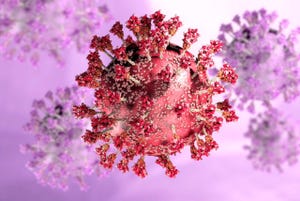Analyst Considers Implications of Abbott Split
In many ways, Abbott Laboratories decision to split its pharma and medical device segments makes good sense, says Venkat Rajan, industry manager, medical devices at Frost & Sullivan. While there is some overlap between the firm's pharma and medical device devisions, the business models for the two divisions are vastly different. Rajan pointed to sizable differences in R&D, testing, product lifecycles, commercialization, intellectual property, and so forth. The regulatory paths of pharmaceutical products and medical devices are also very dissimilar, he adds.
November 2, 2011
In many ways, Abbott Laboratories' decision to split its pharma and medical device segments makes good sense, says Venkat Rajan, industry manager, medical devices at Frost & Sullivan. While there is some overlap between the firm's pharma and medical device divisions, the business models for the two divisions are vastly different. Rajan pointed to sizable differences in R&D, testing, product lifecycles, commercialization, and intellectual property. The regulatory paths of pharmaceutical products and medical devices are also very dissimilar, he adds.
 Splitting the two segments enables the company to manage each according to a specific business model. When the two branches were together, it made it hard for the device segment to really compete with the company's pharmaceutical arm, he says. "The pharma business is so big that strong growth of the device segment would get lost," he says. When the two branches were together, "it was kind of hard for the device segment to move the ticker in terms of growth."
Splitting the two segments enables the company to manage each according to a specific business model. When the two branches were together, it made it hard for the device segment to really compete with the company's pharmaceutical arm, he says. "The pharma business is so big that strong growth of the device segment would get lost," he says. When the two branches were together, "it was kind of hard for the device segment to move the ticker in terms of growth."
The split also gives investors a better picture of what is happening, he adds. "We've seen a lot of large conglomerates separate the two groups." As one example, Rajan cites Cardinal's spin off of Care Fusion. He emphasizes that he doesn't think the split was motivated by an attempt to separate a business segment that is less successful. "This wasn't like Netflix's move to downplay it's DVD business," he says. "I don't think one was dragging down the other. They are just so different."
"I don't think you'll see a lot of wholesale changes at the two divisions." |
When asked if the move will help Abbott better compete with other big names such as Medtronic, Rajan said: "Yes and no. If you look at Abbott's vascular business, it's already doing really well. They have a market-leading drug-eluting stent. They are very strong in peripheral, too." He also added that the firm's optics group is also strong. "They are a top-three competitor in that field. Same with diagnostics. Same with lab equipment. They are very strong in several markets."
He again stressed that the main advantage of the decision was to manage the device segment differently than the pharmaceutical segment. The main downside of the split is that it might prevent the firm from having enough capital to make large acquisitions. He points to Johnson and Johnson as a counterpoint, which, thanks to its large cash supply, can afford big purchases like Synthes. In then end, though, the inability to make large acquisitions is something of a minor disadvantage when taken in the broader context of the move.
He summarized by saying "I don't think you'll see a lot of wholesale changes at the two divisions. There probably won't be any fundamental huge change in the next three to five years."
Regarding how Abbott would handle its line of combination products, which blur the line between drug and device, Rajan said that "if there is a drug/device combination product, the company will probably still treat it like a device."
When asked what other conglomerate companies are likely think of the split, he say he that, at the very least, if they are not tempted to follow suit in the short term, they are likely to sit back on the sidelines and see how the move works out for Abbott.
You May Also Like


